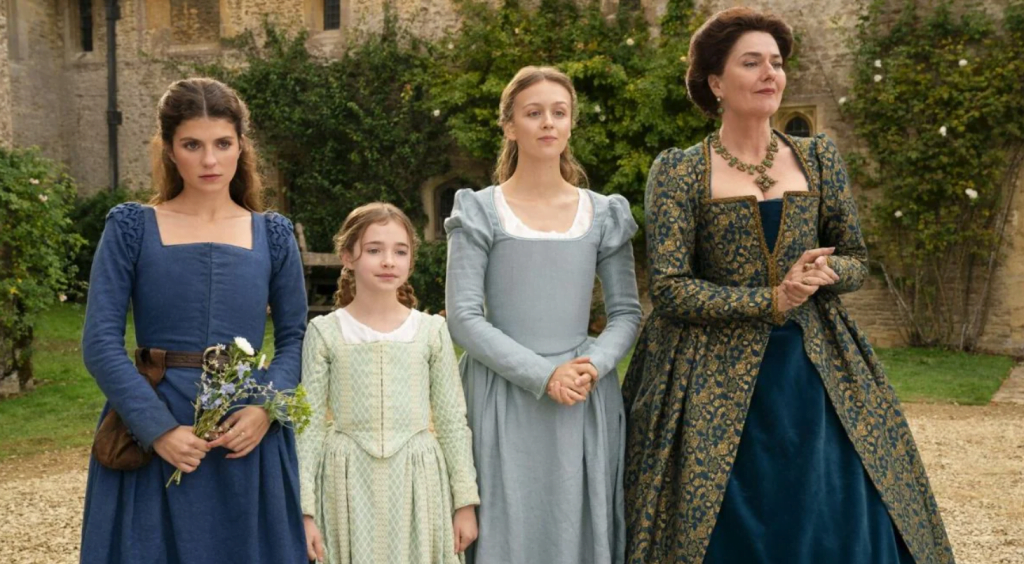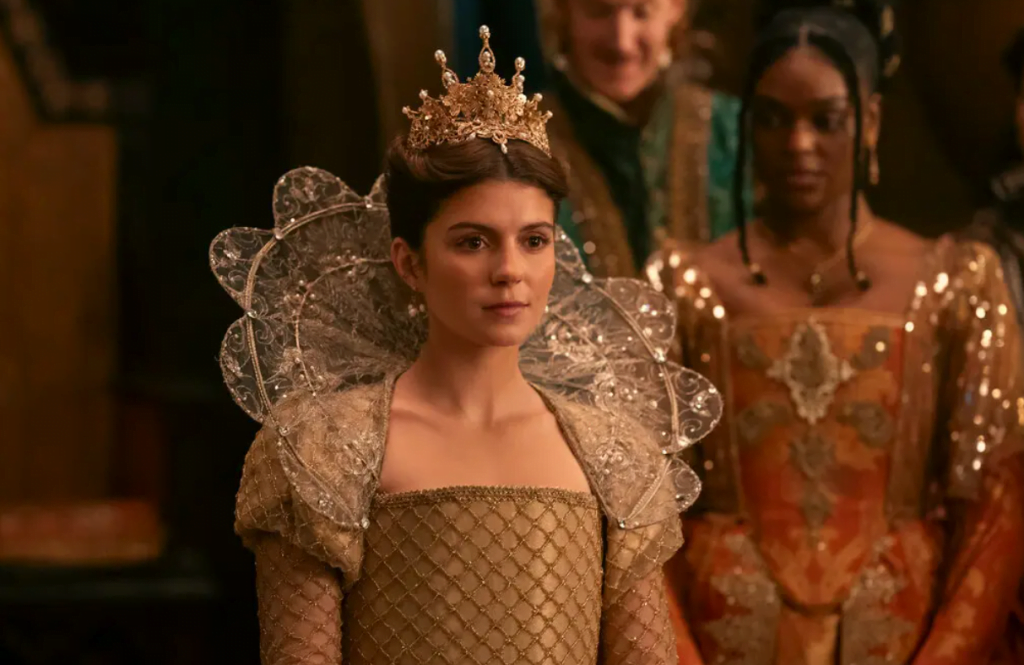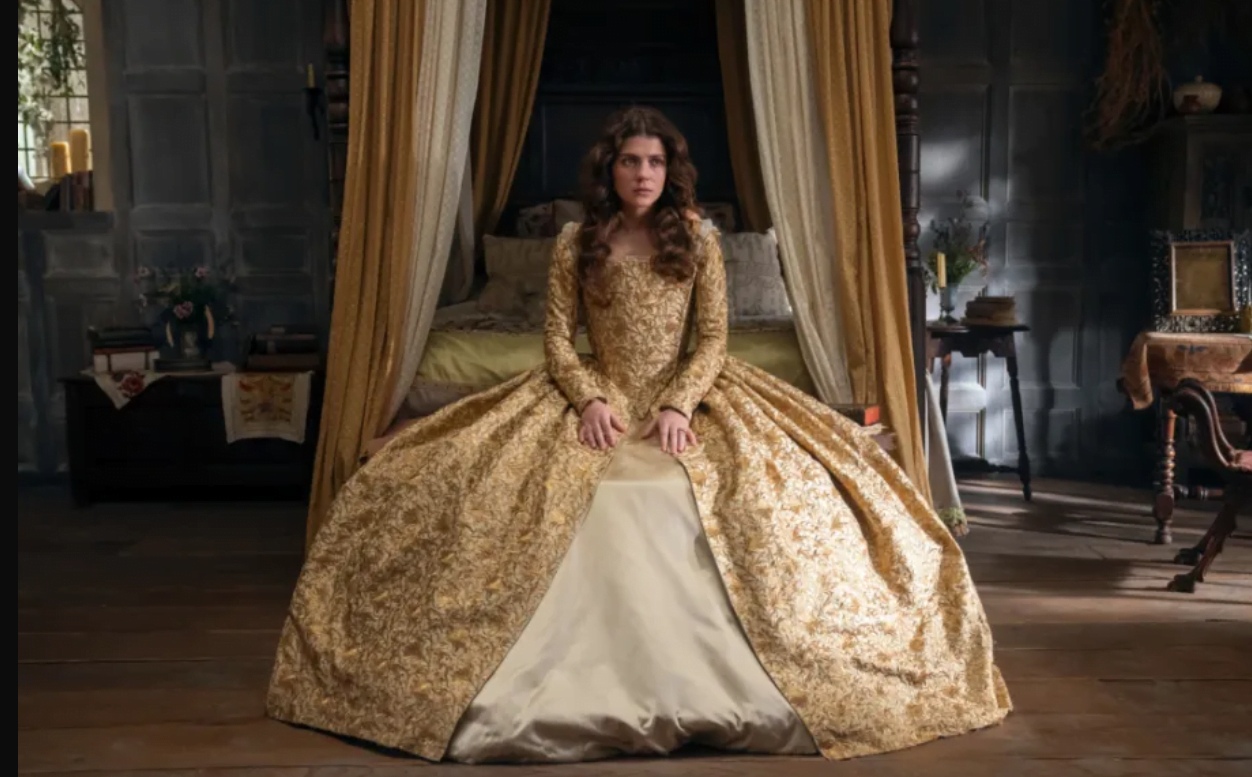Since its release in June, Amazon Prime Video’s My Lady Jane has been generating significant buzz. It seems to be the perfect show for viewers seeking a delightful blend of humour, history and romance. From the very beginning, the series offers no farcical promise of historical accuracy. One could argue that it is its irreverent take on history and thoroughly absurd refashioning of actual past events that make My Lady Jane stand out more profoundly.
My Lady Jane opens with a quick history lesson on the titular character, Lady Jane Grey, delivered by its flippant narrator. Following the untimely death of King Edward VI, son and successor of the Tudor king Henry VIII, the crown bypassed half-sisters of the King, and rightful heirs Mary and Elizabeth, landing instead on the often overlooked Lady Jane Grey. Her reign, the shortest in British history, ended just a fortnight later when she was beheaded on charges of treason by the Catholic Queen Mary.
Lady Jane Grey is thus remembered as the Nine-Day Queen. Described in the show as an “intellectual rebel, a bit of a pain in the ass and a political pawn to her ambitious noble family,” Jane Grey’s marriage and her subsequent enthronement were both against her will. The series presents the story of Britain’s reluctant queen as an anti-history, a colossal contingency. “What if history were different?” My Lady Jane tasks itself with creating a wildly surprising, delightfully hilarious plotline to answer its initial question.
Of Beasts and Men in My Lady Jane
In this rendering of Queen Jane’s life, things go awry in every episode and resolve themselves fantastically—often quite literally. The viewer first realises that the England in ‘My Lady Jane,’ harbours a strange peculiarity a little way into the first episode. When Jane’s scheming mother, Lady Frances Grey, arranges her marriage to the stranger Guildford Dudley and effectively traps her into going through with it, Jane attempts to run away from her home with her maid and best friend, Susannah. The impossibility of escaping Frances’ unyielding grasp over Jane’s fate is first exemplified when Jane and Susannah are caught fleeing by her. As Frances accuses Susannah of thievery and kidnapping her daughter—crimes punishable by death—Susannah promptly escapes by transforming into a hawk. If this catches you off guard, then the show has already worked its (very real) magic. My Lady Jane’s inherent charm might just lie in the fact that, on the surface, the show does not take itself too seriously.

Susannah’s transfiguration introduces the viewers to King Edward’s bizarre England. The land is divided among Ethians, people like Susannah, who can transform and take the form of animals, and Verities, people like Jane. A Division Law ensures that the activities of Ethians and Verities are absolutely severed, with the royal court and nobility pushing for the eradication of the “Ethian plague.” While Verity occupies high positions and the monarch’s favour, Ethians are relegated to camps in the forest and forced to steal for survival.
My Lady Jane excellently portrays how unchecked bigotry can spread within a society and highlights the repulsiveness of such beliefs.
The brilliance of My Lady Jane lies in its re-visioning. The opposing Ethian and Verity factions can be seen as an allegory for Tudor England’s conflict between Catholics and Protestants. Queen Anne Boleyn’s Ethianism (“an animal in and out of bed”), and Mary’s sinister aversion toward Ethians are all interestingly aligned with actual history. It is with this in mind that Jane’s attempts as Queen to end the division laws acquire a clever dual meaning in the show. My Lady Jane excellently portrays how unchecked bigotry can spread within a society and highlights the repulsiveness of such beliefs.
Lady Jane Grey
The show’s heroine Lady Jane Grey desires nothing more than independence and to publish her illustrated book on herbs and their uses. However, as it goes for most female leads who aspire to an intellectual, drama-free life, her plans are thwarted in the first ten minutes of the pilot. Lady Frances is determined to restore the family’s fortunes by arranging a marriage between Jane and Lord Dudley’s youngest son, Guildford, and in the process also burns Jane’s book. She soon realises that not even King Edward, her beloved cousin, can help her out of the situation.

After several failed attempts at dodging her wedding, Jane finds herself at the altar, staring into the eyes of our perfectly flawed, brooding hero. For the newly married Jane, things become complicated when she realises that her husband has a dark, seemingly irreversible secret that could get both of them killed. The stakes escalate when Jane is crowned England’s Queen after Edward’s shady death.
Jane Grey is not a perfect heroine, but she is undeniably intelligent and lovable from beginning to end. She is sharp, has no problem accepting her faults or apologising, and the viewer inevitably roots for her. Emily Bader’s performance as Jane shines through when she shares the screen with Edward Bluemel’s character, Guildford Dudley. Their on-screen chemistry is electric, with the different tropes of arranged marriage, enemies-to-lovers and forbidden love bouncing off them effortlessly without ever feeling overdone.
Parallel to all the twists and turns and successive happenings, the show also manages to make Lady Jane Grey a believable female lead. She is thoroughly progressive, exceptionally sexually liberated and always claiming her agency, even when all odds are pitted against her. Although the very premise of the story guarantees her invincibility, she remains very human, making Jane’s adventures relatable, even to modern spectators of a 16th-century Tudor drama.
The ultimate Tudor Jamboree
The compelling storyline, deadpan humour, and convincing characters make My Lady Jane binge-worthy. Whether it’s her domineering mother, conniving royal cousin Mary, or her well-meaning but ignorant brother-in-law Stan Dudley, Jane’s interactions with all characters are a treat to watch.
However, unlike most shows with a strong, well-developed protagonist, My Lady Jane does not compromise on the individual narratives of its supporting characters. Much of its funniest and most engaging moments are found when the side characters fill the screen, embodying their quirks and adding richness to the story.

As far as TV villains go, there are few as comically malicious as the nefarious, bath-averse, plotting Queen Mary and her accomplice Lord Seymour. Their sexual escapades and alarming romantic dynamics are a source of both intrigue and amusement, adding a unique twist to their villainous schemes.
In addition, the women in the show stand out remarkably. Queen Mary is a formidable force and the perfect foil to Lady Jane. Frances is refreshingly sex-positive, Princess Elizabeth is sweet but sensible, and Lady Katherine is quietly bold and receives a satisfying ending to her story.
The rush of the plot complete with beheadings, raunchy humour, magic animals, unparalleled romantic tension, uproarious family dramas, diabolic villains and an undercurrent of political commentary makes My Lady Jane one of the best shows of 2024. The showmakers walk the tightrope between absurdity and reality carefully, never once tipping too much or pushing too far; period dramas have never been more fun. The show’s soundtrack, featuring modern music, offers a bold and refreshing twist on traditional period drama conventions without taking away from its authenticity.
The first season of My Lady Jane concludes with a satisfying yet tantalisingly open ending, leaving ample room for another season. The show adeptly leaves its audience craving more—an irresistible fusion of historical whimsy that promises even greater adventures ahead.
About the author(s)
Gayathri S (she/her) is currently pursuing her master's in English. With a deep-rooted love for literature and writing, she hopes to streamline her interests towards a career in journalism. Alongside her studies, Gayathri has gained practical experience through internships in content writing, editing, and research. These opportunities have strengthened her commitment to impactful storytelling and managing projects aligned with broader social goals. Gayathri looks forward to merging her passion for writing with journalism, where she can explore and report on diverse narratives.





